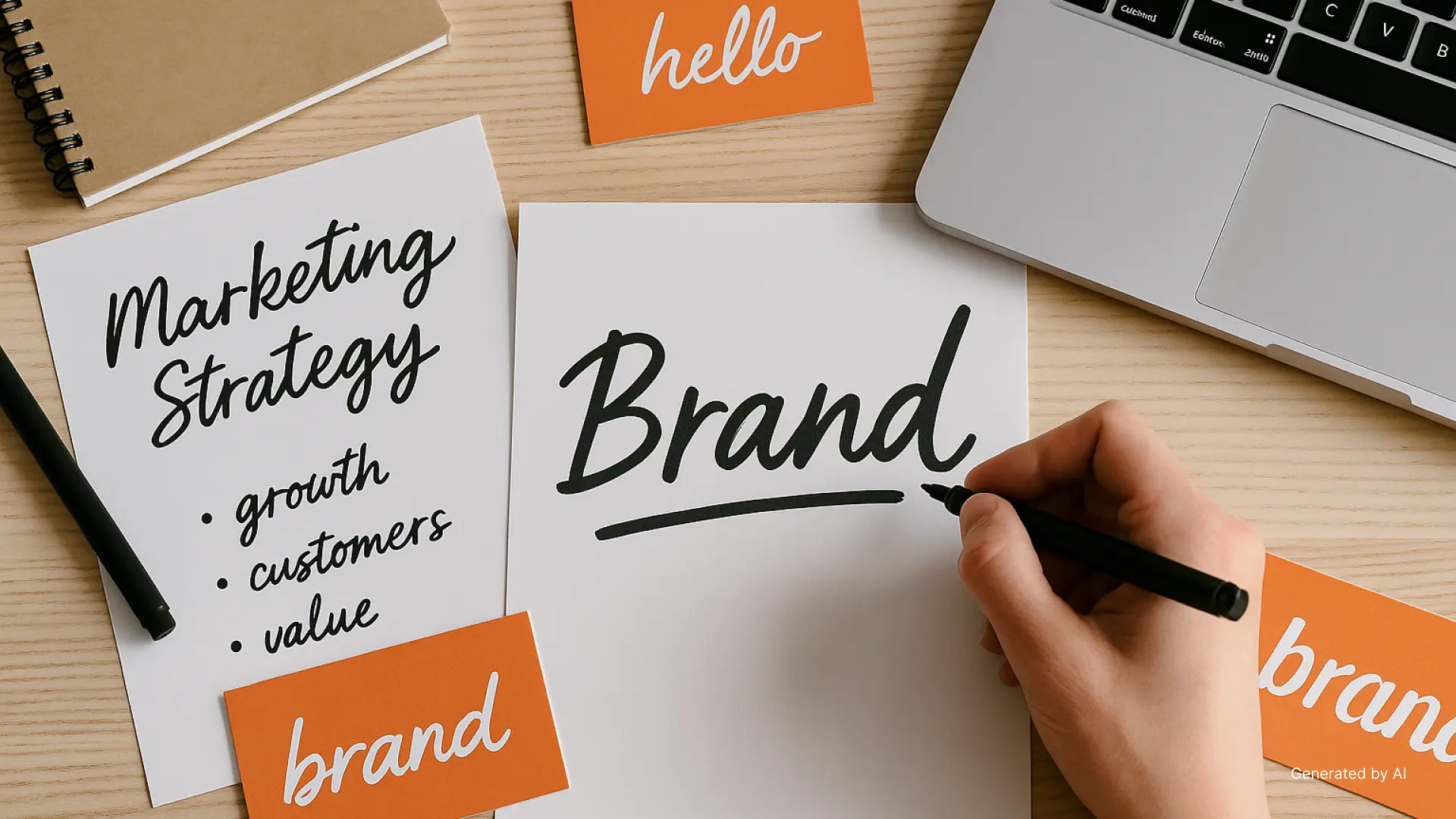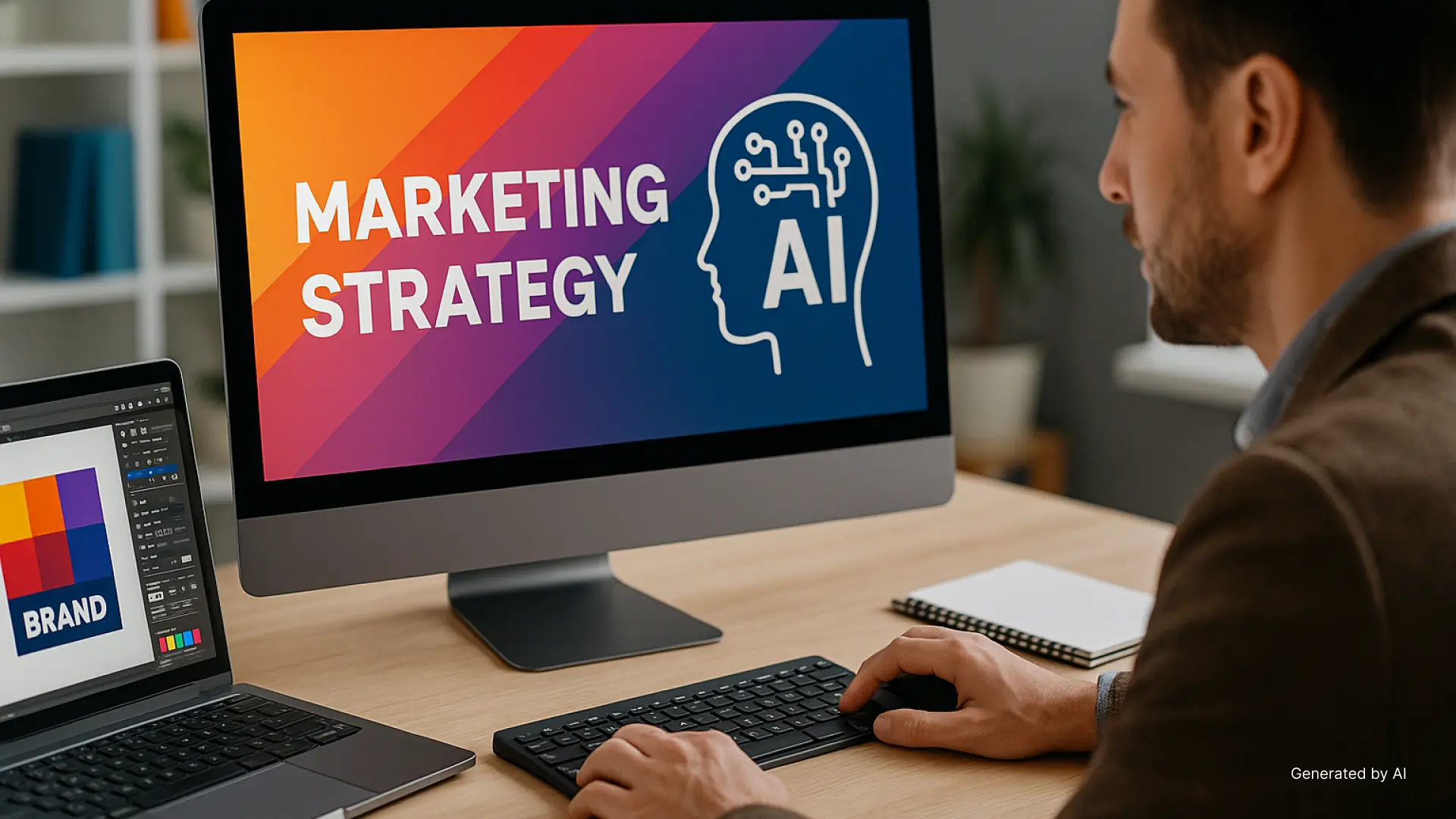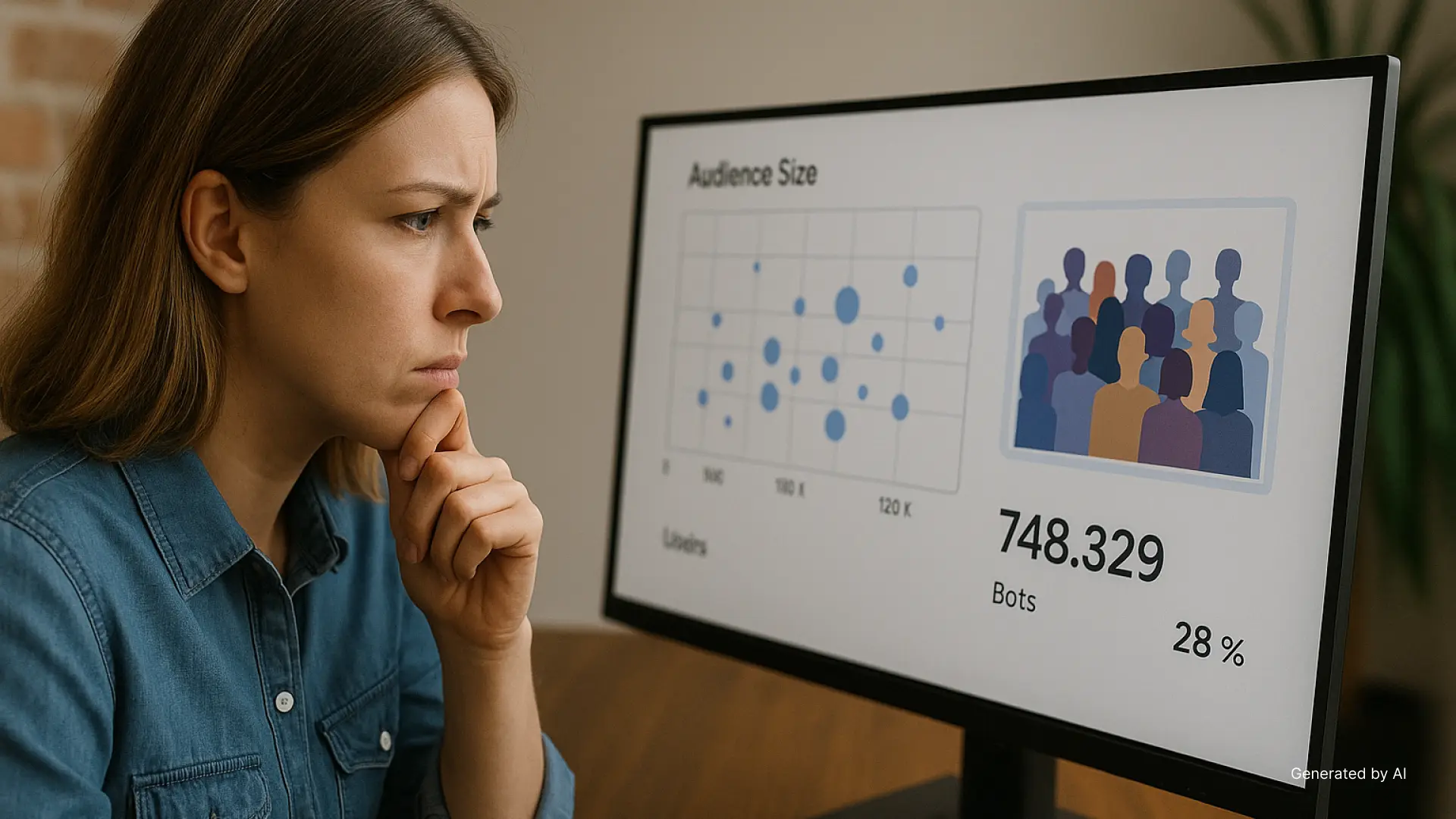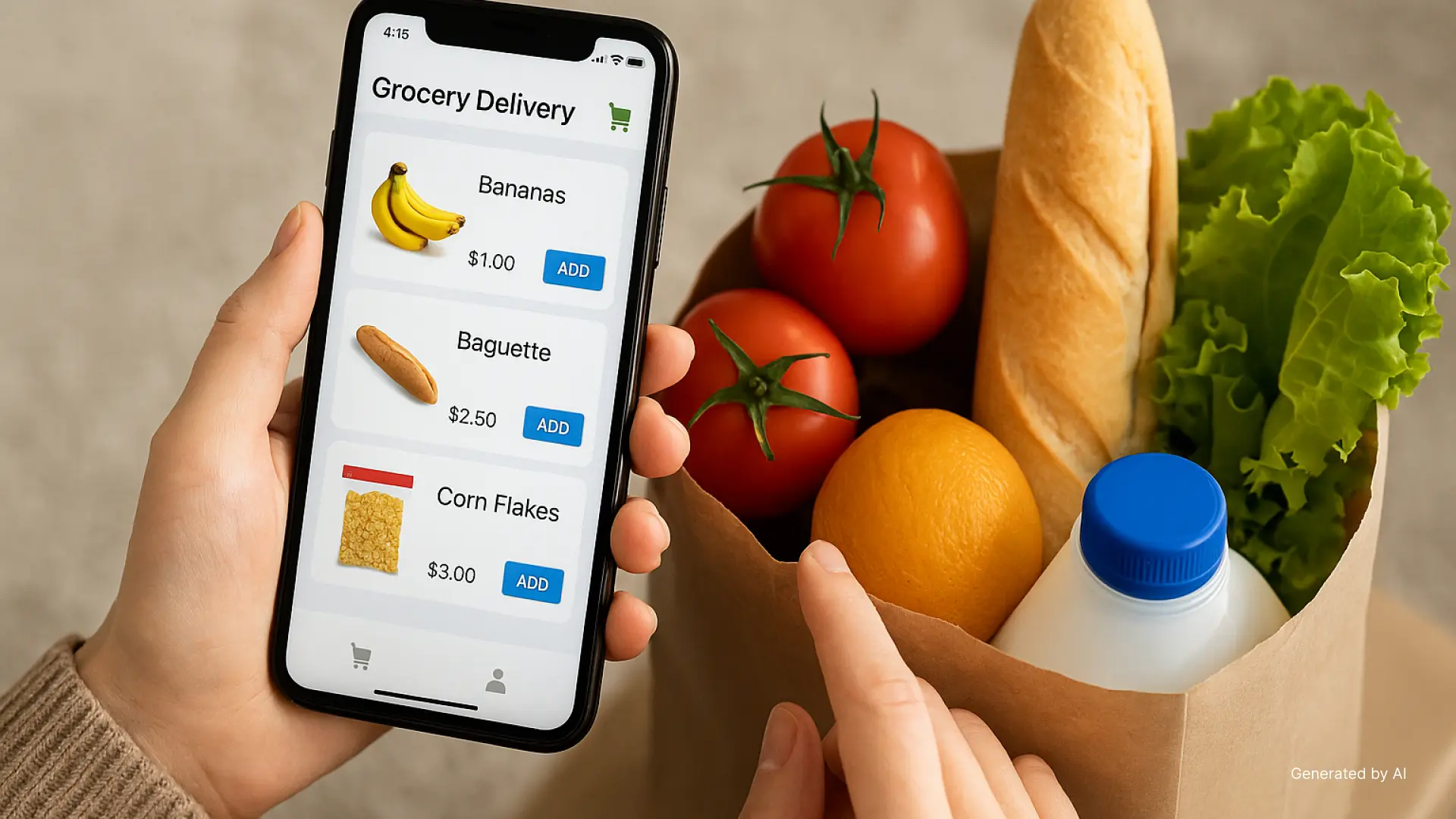B2B Brand Building vs B2C: Key Differences in Marketing and Sales Strategies
In the dynamic landscape of 2025, the principles guiding Business-to-Business (B2B) and Business-to-Consumer (B2C) marketing are undergoing significant evolution. While the fundamental objective of connecting with an audience remains constant, the pathways to achieving success diverge considerably, even as some strategies begin to converge. The marketing environment is rapidly transforming, influenced by profound technological advancements, shifts in communication paradigms, and evolving consumer interests. This report will delve into the core distinctions in decision-making processes, audience characteristics, marketing methodologies, and sales strategies for B2B brand building compared to B2C. It will highlight the latest trends shaping 2025 and underscore the increasing importance of a human-centered approach across both domains. A nuanced understanding of these differences and emerging commonalities is crucial for crafting effective strategies that drive tangible growth and cultivate enduring brand equity.
The Core Divide: Understanding B2B vs B2C Decision-Making and Audience
This section establishes the foundational differences that shape subsequent marketing and sales approaches, emphasizing the distinct psychological and operational drivers inherent in B2B and B2C environments.
B2B Decision-Making: The Rational, Committee-Driven Journey
B2B purchase decisions are fundamentally driven by a set of rational parameters, prioritizing factors such as Return on Investment (ROI), cost-effectiveness, seamless integration with existing systems, and scalability. The primary objective for businesses is to address specific pain points, whether they involve improving operational efficiencies, mitigating compliance risks, or seizing new market opportunities. This emphasis on logical considerations means that every investment must demonstrate clear, measurable value to the organization.
The decision-making process in B2B environments is inherently complex and prolonged, typically involving multiple stakeholders. An average of six to ten individuals contribute to the purchasing decision, extending the sales cycle significantly. This “Committee-Driven Journey” implies that each member brings distinct priorities to the table, ranging from financial implications and security protocols to technical integration and end-user experience. Unlike the often singular decision-maker in B2C transactions, B2B purchases necessitate convincing an entire committee, a process that can span several months and involve extensive internal discussions, reviews, and formal approvals.
A notable shift in 2025 is the evolving expectations of B2B buyers. These professionals increasingly anticipate the same level of convenience, transparency, and efficiency they experience as consumers in their personal lives. This phenomenon, often referred to as the “consumerization” of B2B, reflects a fundamental change in the psychology of business decision-makers. As individuals, these buyers are accustomed to highly personalized, seamless, and immediate digital experiences from e-commerce platforms and streaming services. These personal interactions establish a new, elevated baseline for their professional engagements, driving a demand for similar ease and transparency in their B2B purchasing journeys. This includes expectations for seamless omnichannel experiences, allowing them to initiate an order online and finalize it with a sales representative, alongside real-time transparency regarding pricing, product availability, delivery times, and order status. A significant challenge highlighted by recent reports indicates that 85% of B2B buyers experience frustration with online purchasing due to missing or inaccurate stock levels, pricing, and delivery timelines. This gap between current B2B online experiences and buyer expectations presents a clear opportunity for businesses to optimize their digital presence and enhance customer experience. Companies that fail to provide intuitive, transparent, and efficient digital platforms risk considerable buyer frustration, abandoned purchases, and ultimately, a loss of market share, even if their core product or service is superior. This necessitates strategic investment in robust UI/UX, integrated digital systems, and real-time data visibility to meet these evolving demands.
B2C Decision-Making: The Emotional, Individual Path
In contrast, B2C decision-making is primarily driven by emotional factors, followed by perceived value, convenience, and brand loyalty. Purchases are frequently influenced by how a brand makes consumers feel and whether it aligns with their personal values or mission. These decisions are typically quicker and more impulsive, often swayed by discounts, promotions, or immediate brand perception. The buyer is usually an individual or a family, making choices based on unique, personal preferences.
Consumer expectations in 2025 are characterized by a strong desire for brand authenticity and genuine interactions. In a digital world saturated with marketing messages and “over-curated content,” consumers have developed a sophisticated ability to discern genuine communication from superficial claims. Authenticity is no longer merely a buzzword but a critical differentiator and a fundamental prerequisite for building trust and fostering loyalty. Consumers are weary of overly polished narratives and scripted responses, instead seeking brands that present themselves honestly, acknowledging both their successes and areas for improvement. They appreciate transparency about processes, challenges, and commitments. This means brands need to move beyond superficial “greenwashing” or performative social responsibility, as such approaches will no longer suffice. Instead, they must integrate their stated values into their core ethos and demonstrate measurable impact. This requires genuine engagement, fostering community, and actively encouraging customer participation through avenues like user-generated content, which serves as a powerful form of modern word-of-mouth marketing.
Furthermore, fulfilling expectations with real-time engagement is paramount. The integration of artificial intelligence (AI) and big data is revolutionizing real-time customer engagement. Personalized notifications tailored to individual preferences, live chats offering immediate assistance, real-time feedback mechanisms, and swift responses to queries are becoming the norm. This immediacy enhances customer involvement and significantly boosts brand loyalty and satisfaction. Consumers increasingly expect brands to engage with pressing social issues, necessitating real-time responses and fostering engagement on trending topics. This proactive approach positions brands as responsive and aware, cultivating deeper connections and trust. The proliferation of digital content and social media has led to consumer fatigue with overly polished narratives and a heightened skepticism towards marketing claims. This, in turn, has driven a demand for genuine, transparent, and authentic brand interactions, making authenticity a key driver of B2C brand loyalty and a crucial competitive advantage.
Audience Breadth and Client Value: A Tale of Two Scales
The sheer scale of target audiences and the corresponding client value represent another fundamental distinction between B2B and B2C. B2C brands typically aim to reach a broad and diverse group of individual consumers, appealing to the masses with varying likes, dislikes, and purchasing habits. To achieve significant sales figures, B2C companies often need to reach and sell to hundreds of thousands of people, as individual products are generally lower-priced.
Conversely, B2B audiences are significantly narrower and more defined, usually consisting of a specific number of buyers with a straightforward professional profile, such as ad agency owners or finance VPs at tech startups. Despite these smaller audiences, the B2B e-commerce market accounted for over $2 trillion in 2023, surpassing the B2C market’s $1.119 trillion during the same period. This disparity highlights the immense revenue potential per B2B customer. A single B2B client’s business order value can be substantially larger than that of 10,000 B2C customers combined. Moreover, B2B customers are more likely to have a higher lifetime value than consumers, often entering into multi-year contracts. This disproportionately high client value means that while the cost of customer acquisition (CAC) can be higher for B2B, the return on investment from retaining a single client and fostering long-term partnerships is exponentially greater. Therefore, B2B marketing and sales must prioritize deep relationship building, exceptional customer service, and ongoing value delivery over transactional, quick conversions. This inherent value justifies the longer sales cycles, the necessity of dedicated sales teams, and the strategic investment in robust post-purchase support, onboarding, and customer success initiatives. It also explains why B2B content needs to be highly educational, authoritative, and problem-solving oriented, positioning the company as a trusted advisor and partner, not just a vendor. The focus shifts from volume to depth of engagement.
B2B Brand Building: Strategies for Trust and Authority in 2025
This section details the specific strategies B2B companies must employ to build strong brands and drive sales in the coming year, emphasizing the long-term nature of these efforts.
Building Trust and Credibility: The Long Game
For B2B entities, a sustained track record of delivering results is paramount for building a brand and increasing its equity; there are no shortcuts. This contrasts sharply with B2C, where mass appeal and widespread recognition can accelerate brand establishment. Establishing foundational elements is crucial, including a professional website, robust portfolio decks, high-quality public relations content, and consistent news mentions. These are considered “hygiene and must-haves” for any credible B2B operation.
Significant investment is necessary in showcasing accomplishments through compelling case studies, high-quality videos, and detailed blogs, complemented by authentic client testimonials. Companies like AWS and ABB are exemplary in their effective use of case studies to demonstrate tangible value and successful outcomes. In a complex, high-stakes B2B decision-making environment, where multiple stakeholders are involved and substantial investments are at stake, external validation, often referred to as “social proof,” becomes incredibly powerful. It serves as a primary mechanism for mitigating risk for the buying committee. Tangible evidence of past success, demonstrated ROI, and credible third-party endorsements build confidence and reduce perceived risk in a way that internal marketing claims simply cannot. B2B companies must therefore proactively and strategically solicit, curate, and disseminate customer success stories, detailed case studies, and industry endorsements. This is not merely a sales enablement activity; it is a core brand-building endeavor that can significantly shorten sales cycles by addressing potential objections and building trust even before direct sales engagement. It shifts the brand’s narrative from self-promotion to validated expertise.
For newer businesses, strategically leveraging affiliations—such as investors, mentors, start-up accelerator badges, past achievements, or collective stakeholder experience—is vital to build trust and assure prospects that the business is not a “fly-by-night entity” but a reliable partner committed to delivering promised results. The high-risk, high-value nature of B2B purchases and the involvement of multiple decision-makers create a strong demand for external validation and risk reduction. This, in turn, makes social proof a critical component of B2B brand building, directly influencing trust, credibility, and ultimately, sales acceleration.
Key B2B Marketing Strategies for 2025
The B2B marketing landscape in 2025 is characterized by a blend of advanced technological integration and refined content strategies.
AI & Automation: A deeper integration of Artificial Intelligence (AI) and automation into marketing processes represents the most significant trend for the coming years. AI, encompassing machine learning (ML), natural language processing (NLP), and large language models (LLM), is revolutionizing how companies interact with vast pools of data, making it more accessible and actionable. For example, LLMs enable businesses to “chat” with their data using plain English, querying complex datasets and receiving real-time insights. AI is also being utilized for predictive analytics and efficient chatbot services, optimizing resource allocation and enhancing customer interactions.
Video Marketing Dominance: Visual storytelling is taking center stage in B2B, leveraging its power to condense complex information into digestible, engaging narratives. Videos are effectively used for product demonstrations, virtual tours, and customer testimonials, building compelling narratives that drive engagement and foster relationships. The effectiveness of video marketing, however, hinges on quality production, strategic messaging, and creativity in content development.
Content Marketing (Educational & Authoritative): In the B2B context, content must be educational, authoritative, and focused on solving specific problems. This involves offering in-depth guides, case studies, whitepapers, and detailed industry insights to establish the company as a thought leader. Webinars and podcasts are particularly effective for engaging with decision-makers and providing value, especially for those buyers undertaking a research-heavy journey.
Search Engine Optimization (SEO): SEO remains a cornerstone of B2B strategy, focusing on ranking for industry-specific terms, solution-oriented keywords, and long-tail keywords that indicate purchase intent. Technical SEO is crucial, ensuring the website is mobile-friendly, fast-loading, and easily crawlable by search engines.
Email Marketing (Lead Nurturing): Email marketing is a vital tool for nurturing leads, offering industry insights, and delivering personalized content. It necessitates segmentation of email lists to tailor campaigns based on the user’s position in the buyer’s journey, with automation facilitating drip campaigns to gradually build trust.
Paid Advertising (PPC): For B2B, Paid Per Click (PPC) strategically focuses on platforms like Google Ads, LinkedIn ads, and display network ads to reach a professional audience. Targeting by job titles, industries, and company size enhances ad relevance, and retargeting ads are effective for re-engaging website visitors who did not convert.
While B2B historically relied heavily on direct sales, events, and traditional advertising, the ongoing digital transformation and the “consumerization” of buyer expectations mean B2B companies must now cultivate a robust and integrated digital ecosystem. This is not solely about immediate lead generation; it is about establishing digital thought leadership, building brand authority, and maintaining a strong online presence that supports the inherently long and complex B2B sales cycle. B2B companies need to invest in a cohesive digital strategy that synergizes various channels: content marketing for education, authority, and problem-solving; SEO for organic discoverability of solutions; AI for efficiency, data-driven insights, and personalization; and targeted digital ads for reach, retargeting, and specific audience targeting. A professional, user-friendly website is explicitly a “must-have”. This holistic approach ensures the brand is visible and credible at every stage of the non-linear B2B buyer journey. The fundamental shift of B2B buyers to online research, self-education, and digital engagement necessitates a strong, multi-faceted digital presence from vendors. This leads to the adoption of diverse digital marketing strategies to meet buyers at various stages of their non-linear journey, transforming B2B marketing beyond traditional sales-centric models.
B2C Marketing: Connecting Emotionally and Driving Action in 2025
This section explores the dynamic strategies B2C brands are leveraging to capture attention, foster loyalty, and drive quick conversions in a rapidly evolving consumer landscape.
Cultivating Emotional Connections and Authenticity
In a world saturated with “over-curated content,” consumers increasingly crave genuine interactions and real stories. They are tired of overly polished narratives and scripted responses, seeking brands that present themselves honestly, acknowledging both successes and areas for improvement. This desire for brand authenticity extends to consumers expecting brands to engage with pressing social issues, requiring real-time responses and fostering engagement on trending topics. This proactive approach positions brands as responsive and aware, building deeper connections and trust. Today’s consumers actively seek brands that reflect their values and are willing to advocate for what matters, making authenticity a key factor in establishing long-lasting relationships. This includes transparency about supply chains and eco-friendly practices.
In an increasingly competitive market with abundant choices, B2C brands are realizing that traditional transactional loyalty, based purely on discounts or fleeting promotions, is unsustainable and easily disrupted. True, lasting loyalty in 2025 stems from building deep, emotional connections and fostering a sense of community. This signifies a strategic shift for B2C, borrowing from B2B’s playbook of cultivating enduring relationships. B2C marketing must strategically invest in brand building that creates a “sense of belonging” and resonates with consumer values. This involves refined purpose-driven branding, community-centric strategies, and authentic storytelling that goes beyond product features to connect with consumers on a human level. It is about creating advocates, not just customers. Increased competition and consumer choice have led to a demand for deeper brand differentiation beyond price and superficial benefits. This drives B2C brands to invest in emotional connections, authenticity, and community-building to secure lasting loyalty and higher customer lifetime value, rather than relying solely on immediate sales.
Top B2C Marketing Approaches for 2025
The B2C marketing landscape in 2025 is defined by a focus on personalized, interactive, and immediate engagement.
AI-Powered Personalization: Artificial intelligence continues to redefine marketing by delivering personalized consumer experiences, predictive analytics, and efficient chatbot customer services. AI algorithms analyze user behavior and preferences to provide content that feels uniquely tailored, akin to Netflix’s recommendations or Spotify’s “Discover Weekly”. Retail brands, for instance, utilize AI-driven email marketing campaigns for product recommendations, e-commerce platforms track browsing for complementary items, and media companies optimize homepage content in real-time, demonstrating the practical application of AI for hyper-personalization.
Short-Form Video Domination: Short-form video has become a crucial element of marketing on social media platforms such as TikTok, Instagram Reels, and YouTube Shorts. It drives engagement for businesses of all sizes, emphasizing creativity and brevity. This content can be shoppable, allowing users to purchase products directly while interacting with the story, significantly enhancing conversions.
Interactive & Immersive Content: Flat, static content is no longer sufficient to capture attention; consumers actively seek unique experiences, not just information. Augmented Reality (AR) for virtual try-ons (makeup, glasses, clothes) and Virtual Reality (VR) for virtual events, showrooms, and travel experiences are enhancing online shopping and engagement. These trends collectively indicate that consumers are increasingly moving beyond simply purchasing products; they are actively seeking and valuing experiences with brands. This means B2C marketing is shifting from static advertisements to creating dynamic, personalized, and engaging interactions that allow consumers to try, explore, and connect with the brand in novel, often immersive, ways. The goal is to create “shopper-tainment” where the buying process itself is enjoyable and interactive. Brands must strategically invest in technologies and content formats that facilitate these immersive experiences, such as AR/VR applications, live streams, interactive quizzes, and shoppable videos. This also places a greater emphasis on seamless omnichannel experiences to ensure consistency and fluidity across all touchpoints, from discovery to purchase and post-purchase engagement. Technological advancements combined with changing consumer expectations for instant gratification, personalized interactions, and entertainment are driving the shift towards an “experience economy” in B2C marketing. This, in turn, compels brands to adopt immersive and interactive content strategies to capture and retain attention, leading to higher engagement and conversion rates.
Real-Time Engagement: The integration of AI and big data is revolutionizing real-time customer engagement. Personalized notifications tailored to individual preferences, live chats offering immediate assistance, real-time feedback, and swift responses to queries are becoming the norm, enhancing customer involvement and increasing brand loyalty and satisfaction.
Search Engine Optimization (SEO): For B2C companies, SEO is focused on reaching a wider, more general audience. Optimization targets keywords that align with product categories, consumer pain points, and shopping intent. Prioritizing user experience, ensuring the website is easy to navigate and products are simple to find, and leveraging local SEO for local targeting are critical.
Email Marketing (Promotions & Conversions): For B2C, email marketing emphasizes promotions, discounts, and driving quick conversions. It utilizes personalized email campaigns with tailored offers based on user behavior or past purchases, and leverages automation for abandoned cart reminders to recover lost sales.
Paid Advertising (PPC): PPC offers highly targeted paid advertising opportunities on platforms such as Google Ads, Facebook, and Instagram. It utilizes geo-targeting for location-specific ads, especially for promotions or in-store sales, and employs product-based ads (e.g., Facebook or Instagram Shops) to enable direct purchasing through ads.
The Convergence: Where B2B and B2C Strategies Intersect
This section highlights the “disappearing divide” and the shared tactics that are becoming increasingly prevalent, emphasizing the human element in all marketing.
Human-Centered Marketing: The Disappearing Divide
The traditional chasm between B2B and B2C marketing is narrowing, driven by a universal recognition of the human element in all transactions. While B2B traditionally focused on rational appeals like efficiency and ROI, marketers now understand they are pitching to real people who desire connection, engagement, and understanding. This has led to a significant shift toward creating more relatable, human-focused content that appeals to values, goals, and personal connections, moving beyond mere technical specifications. Companies like Salesforce and HubSpot exemplify this by using storytelling and empathy to build loyalty, demonstrating that B2B brands can benefit from prioritizing human connections over traditional hard-sell tactics.
Conversely, B2C marketing, historically focused on quick, impactful campaigns for immediate action, is now adopting strategies from B2B by prioritizing long-term relationships. B2C brands are actively creating environments where customers feel invested for the long haul, fostering a sense of belonging rather than solely focusing on discounts or fleeting promotions. This mirrors B2B’s traditional emphasis on building trust over extended periods, cultivating relationships that endure for years.
Customer Experience (CX) has emerged as a powerful unifier. CX has become a critical focus in B2B marketing because business buyers, like individual consumers, have grown accustomed to excellent digital experiences and expect personalization and a thoughtful journey, even within a business context. The best brands in both fields are prioritizing people, creating authentic, human-centered connections regardless of whether they target individual consumers or companies. The “human-to-human” trend is not just about being friendly or relatable; it is about leveraging data and technology, such as AI in CRM systems, to deliver genuine empathy and understanding at scale. This means not just personalizing messages, but anticipating needs, proactively addressing pain points, and tailoring interactions in a way that feels genuinely helpful and understood, rather than merely algorithmic. It bridges the gap between the rational (data-driven insights) and the emotional (human connection). This requires sophisticated CRM strategies that unify customer data across all touchpoints and marketing teams capable of translating complex data into emotionally intelligent, actionable campaigns. The goal is to foster a sense of belonging and value, whether for an individual consumer or a key decision-maker within an organization. The increasing demand for personalized experiences, combined with the vast amounts of customer data now available, drives the necessity for “empathy at scale.” AI and advanced CRM systems enable this by providing the tools to understand and respond to individual preferences, fostering deeper, more meaningful connections across both B2B and B2C landscapes.
Shared Tactics and Future Outlook
The convergence of B2B and B2C strategies is particularly evident in their adoption of similar digital and social media tactics.
Influencer Marketing and Thought Leadership: While B2C has long utilized influencers for brand awareness and trust on platforms like Instagram and TikTok, B2B companies are increasingly recognizing this value. LinkedIn, once a purely professional site, is now vibrant with industry influencers, and B2B brands are collaborating with experts to gain authentic visibility and offer insights.
Short-Form Video and Reels: The popularity of TikTok made short-form video essential in B2C marketing. B2B brands are rapidly adopting this format, using quick, engaging videos on LinkedIn and Instagram to share tips, news, and lighthearted takes on business challenges, effectively simplifying complex ideas.
Interactive Content and Direct Engagement: In B2C, brands engage consumers through interactive content like polls, Q&A sessions, and live videos. B2B brands are also experimenting here, hosting “ask me anything” (AMAs) events, webinars, and live Q&As that foster more conversational interactions.
Omnichannel Marketing: Consistency across all touchpoints is critical for both B2B and B2C. B2B buyers, like consumers, expect seamless experiences where they can initiate an order on one platform and complete it on another without disruption.
Data-Driven Marketing: Utilizing data analytics to understand customer behavior and preferences allows for more targeted and effective marketing campaigns. Both B2B and B2C marketers benefit from insights gained through data analysis to refine their strategies and improve ROI.
The increasing use of the same platforms (e.g., LinkedIn, Instagram, TikTok) for similar content formats (influencer marketing, short-form video, interactive content) suggests that the choice of digital platform is becoming less about the traditional “B2B vs B2C” label and more about where the human audience, whether a business buyer or an individual consumer—is most active, receptive, and willing to engage with certain content formats. The platforms themselves are evolving to support a broader range of content and user behaviors, blurring the lines of their original intent. Marketers must adopt a “platform-agnostic” strategy, focusing on delivering the right message in the right format to the right audience, regardless of traditional B2B/B2C channel stereotypes. This requires a deeper, nuanced understanding of audience behavior on specific platforms and how different content types perform there, rather than relying on broad, outdated categorizations of platforms. The widespread adoption of social media and digital platforms by all individuals for both personal and professional use has led to business buyers using the same channels for professional research and engagement as they do for personal purchases. This convergence in platform usage, in turn, drives the adoption of similar content formats and engagement tactics across B2B and B2C marketing, making platform-specific strategy paramount.
Elevate Your Brand: Partnering with Jordie’s Creative Agency for B2B and B2C Success
In the complex and evolving marketing landscape of 2025, the foundation of any successful strategy, whether B2B or B2C, lies in a clearly defined brand identity. This encompasses not only what a company offers but also its unique value proposition and how it resonates with its target audience.
The Power of Strategic Brand Positioning and Logo Design in Bangalore
A strong brand defines a company’s unique value proposition (UVP) and differentiates it in a crowded market. It ensures that when individuals or organizations contemplate a problem, a company’s solution is the first that comes to mind. For B2B entities, effective brand positioning is about establishing the company as a thought leader and a trusted, indispensable partner, aligning with complex business needs and demonstrating clear ROI. For B2C, it is about forging a powerful emotional connection and resonating deeply with consumer values and aspirations. A well-defined brand position and a compelling, memorable logo provide the visual anchor and emotional trigger, ensuring that the brand’s essence is instantly recognizable and resonates deeply. Without this strong, consistent foundation, even the most advanced AI, video, or social media strategies will lack coherence, impact, and long-term memorability.
The logo often serves as the initial visual touchpoint with a brand, embodying its essence, values, and personality. It is more than a mere image; it is a powerful mnemonic device. In 2025, design trends lean towards AI-enhanced design systems while also embracing playful imperfection and tactile designs, demanding expert creative vision to balance innovation with timeless appeal. A well-designed, memorable logo creates a lasting impression and ensures a solution remains top-of-mind, translating brand understanding into brand memory. Investing in expert brand positioning and logo design is a prerequisite for effectively implementing any of the sophisticated 2025 marketing trends discussed. It ensures consistency in a brand’s tone, style, and message across all platforms, which is crucial for achieving seamless omnichannel experiences and building the sustained trust required in both B2B and B2C markets. It serves as the strategic blueprint upon which all subsequent marketing efforts are built. A well-defined brand positioning and a memorable, strategically designed logo provide the necessary foundation for consistent messaging, emotional connection, and differentiation. This, in turn, enables more effective implementation of human-centered marketing strategies across all digital and traditional channels, leading to stronger brand recall, deeper loyalty, and ultimately, sustained business growth.
Jordie’s Creative Agency specializes in crafting compelling brand positioning and logo design services in Bangalore that resonate powerfully with specific target audiences, whether businesses or consumers. We help define a unique narrative, ensuring a brand stands out, communicates its value effectively, and connects on a deeper, human level. Explore how Jordie’s Creative Agency can elevate your brand’s foundation.
Comprehensive Digital Solutions for Holistic Growth
Beyond foundational branding, Jordie’s Creative Agency offers a holistic suite of digital marketing services, seamlessly integrated to support a brand’s journey from initial awareness to conversion and sustained loyalty, regardless of its B2B or B2C focus.
- UI/UX Design: A user-friendly and intuitive digital experience is paramount in both B2B and B2C contexts, as buyers increasingly expect seamless online interactions. Jordie’s Creative Agency delivers exceptional UI/UX design to ensure digital platforms are engaging and efficient. Learn more.
- Website Design and Development: A professional, fast-loading, and mobile-friendly website is a “must-have” for B2B credibility and essential for B2C user experience. We craft responsive and high-performing websites that serve as central hubs for marketing efforts. Discover services.
- Content Marketing: Whether it’s educational whitepapers for B2B or engaging short-form videos for B2C, compelling content builds trust and positions a brand as an industry leader or a relatable entity. Jordie’s Creative Agency develops tailored content strategies that resonate with specific audiences. Explore content solutions.
- Search Engine Optimization (SEO): Optimizing for search engines ensures content is discoverable, driving organic traffic and enhancing brand credibility for both B2B and B2C. Our SEO expertise ensures maximum online visibility. Learn about SEO services.
- Pay-Per-Click (PPC) Services: Targeted PPC campaigns on platforms like Google Ads and LinkedIn (for B2B) or Facebook and Instagram (for B2C) drive relevant traffic and conversions. Jordie’s Creative Agency optimizes ad spend for maximum impact. Discover PPC solutions.
- Social Media Marketing: Leveraging social media platforms to connect with audiences is crucial for both B2B and B2C, fostering engagement and brand presence. We develop dynamic social media strategies that build community and drive interaction. Explore social media services.
- Video Marketing: From product demonstrations for B2B to shoppable short-form videos for B2C, video marketing is a dominant force in visual storytelling and engagement. Jordie’s Creative Agency creates high-quality video content that captivates and converts. Learn about video marketing.
By partnering with Jordie’s Creative Agency, businesses can navigate the complexities of B2B brand building and B2C marketing with a unified, strategic approach, ensuring their brand not only stands out but also drives measurable business results across the entire revenue lifecycle. For a comprehensive digital strategy tailored to your unique needs, contact Jordie’s Creative Agency today.
Conclusion
The marketing landscape of 2025, while exhibiting a fascinating convergence between B2B and B2C strategies, fundamentally underscores the enduring importance of understanding their core distinctions. B2B brand building remains rooted in rational, committee-driven decision-making, emphasizing ROI, long-term relationships, and high client value. Success in this domain hinges on a sustained track record, robust social proof, and a sophisticated digital presence that supports a lengthy, complex sales cycle. Conversely, B2C marketing continues to thrive on emotional connections, immediate gratification, and broad audience appeal, increasingly prioritizing authenticity, real-time engagement, and immersive experiences.
The blurring lines reveal a universal shift towards human-centered marketing, where empathy at scale and a platform-agnostic approach to digital engagement are becoming paramount. Both B2B and B2C are leveraging similar tactics like AI-powered personalization, video content, and interactive experiences, but their application is tailored to their distinct audience behaviors and strategic objectives. Ultimately, effective brand building and marketing in 2025 require a nuanced understanding of these dynamics. Businesses must strategically invest in foundational brand identity—including brand positioning and logo design—as the bedrock upon which all other sophisticated marketing efforts are built. By recognizing the unique drivers of each market while embracing the shared imperative of authentic, human connection, organizations can craft compelling strategies that not only adapt to the evolving digital environment but also drive sustainable growth and foster lasting brand loyalty. Contact us today!






